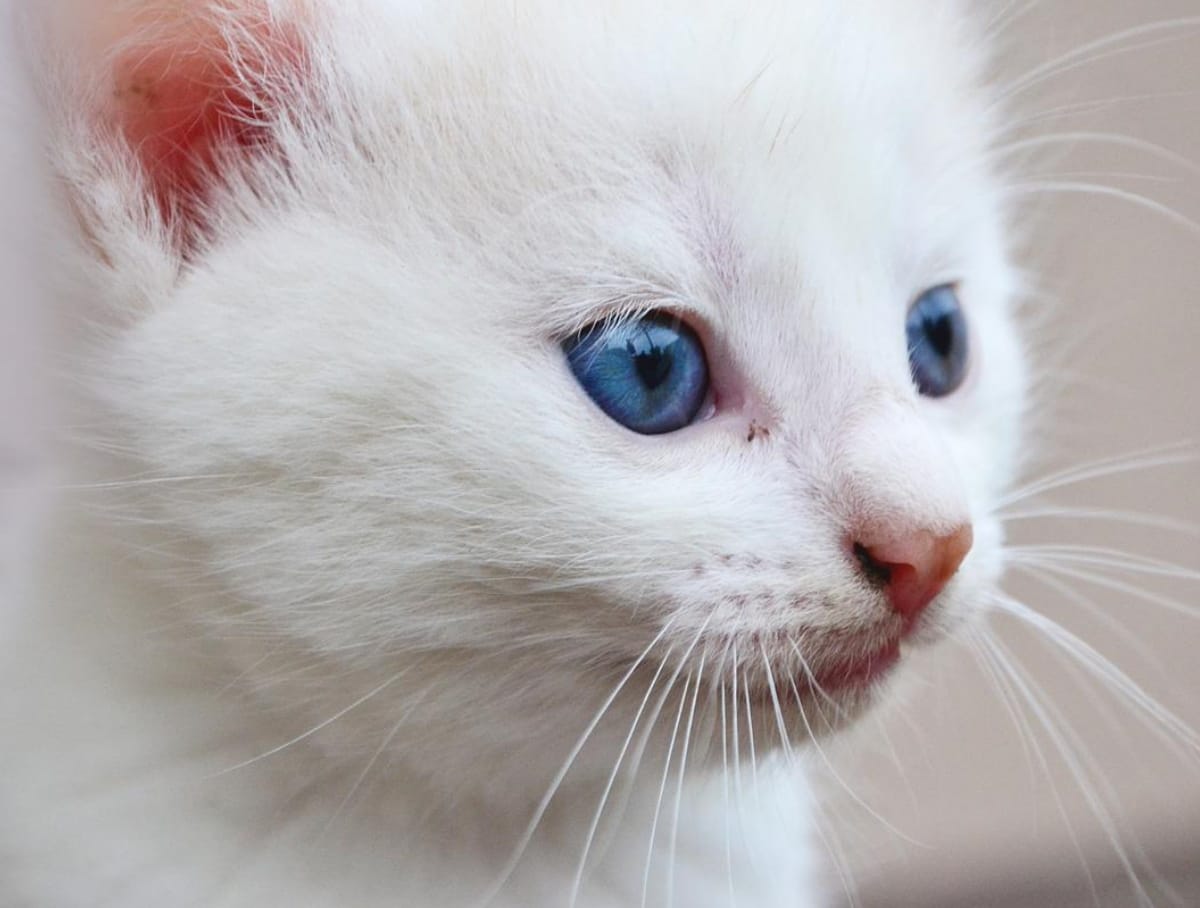It has long been believed that deafness is characteristic of cats with certain external characteristics. Most often, white fur and blue eyes appear in this context. We checked whether the vast majority of these pets are actually deaf.
Also Charles Darwin in his "On the Origin of Species" wrote: “White cats with blue eyes are usually deaf; but, as Mr. Tate recently testified, this feature is peculiar only to cats." Friedrich Engels, familiar with the works of the British "Dialectics of Nature" also noted that “completely white cats with blue eyes are always or almost always deaf.” Similar statements are often found in social networks.
As noted scientists, the deafness of white blue-eyed cats (along with Dalmatians) is the most famous example of the possession of such a property in the animal kingdom. Obviously, geneticists can answer the question about the presence and degree of dependence between such different characteristics. Let's turn to them.
To begin with, it should be noted that any white cats are often mistakenly called albinos. Meanwhile albinism is a hereditary disease in which there is a complete absence of color or pigmentation. In order for a kitten to be born an albino, both of its parents must have a genetic predisposition to this. An albino cat's coat may appear white, but upon closer inspection there are a number of differences.
In particular, a real white cat's eyes can be of almost any common color, and can also be heterochromic (each eye is one color). But the eyes of albino cats have a very limited range of shades due to the complete lack of pigmentation. They can be either pale blue, pinkish, or pinkish blue.

The case we are considering concerns cats with true white fur, since it is in their case that the genetic dependence. It is associated with the presence of a dominant allele (form of the gene) W, which is responsible for the white color of the animal’s coat. If at least one of the alleles in the animal’s genotype turns out to be a dominant mutant W, then the body’s cells lose the ability to organize and do not produce pigment, and the cat, with rare exceptions, remains uncolored, that is, white, until the end of its life.
For us, it is much more important that the dominant white color gene can disrupt the formation of not only future pigment cells, but also nearby cells responsible for the formation of other structures. Thus, blue eye color occurs due to a lack of pigment and the complete absence of tapetum (a layer of the choroid) in the eyes of an animal, and deafness is due to a lack of pigment in the organ of Corti (part of the sound-receiving apparatus). The result is blue-eyed (in one or both eyes) and deaf cats with the mutant W allele.
So we understand the nature of the connection between coat color, blue eyes and deafness, but what do the statistics say? What is the probability that these three signs coincide? There are at least three classic research on this topic, carried out by Western scientists (Bosher and Hallpike, 1965; Mair, 1973; Bergsma and Brown, 1971) on a total of 256 cats. Overall, the prevalence of deafness ranged from 65% to 85% in cats with two blue eyes, 39% to 40% in cats with one blue eye, and 17% to 22% in cats without blue eyes. One more thing study The prevalence of deafness in 84 purebred white cats belonging to ten known breeds gave the following results: 9.5% unilaterally deaf and 10.7% bilaterally deaf, that is, 20.2% of cats with deafness. It is not reported how many of these cats were blue-eyed.
Thus, according to currently known studies, the percentage of white blue-eyed cats with congenital deafness is indeed high, but the characteristic “all” or “almost all” is still inappropriate here. Also note that among albino cats, which are considered “white,” such a genetic deviation is not common. If we talk about cats in general, then, according to research 1991, white cats make up about 5.7% of the total population and 15% of them have blue eyes.
Cover image: Pixabay.
Half-truth
Read on topic:
- Deafness in blue-eyed white cats: The uphill road to solving polygenic disorders
- The Genetics of Deafness in Domestic Animals
- Analysis of hereditary patterns in the fur genes of cats Felis catus
If you find a spelling or grammatical error, please let us know by highlighting the error text and clicking Ctrl+Enter.






